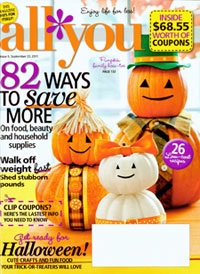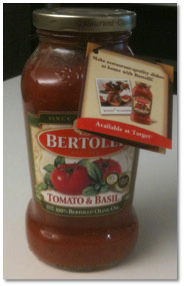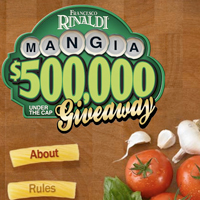Workarounds for Clean Store Policies
You need only take a stroll through the aisles at Target to understand what a clean floor policy means. The retailer has restrictions on all in-store promotions, and everything that comes along with them from point-of-purchase materials to shelf talkers to large-scale holiday displays to motion-activated TVs that call out “hello” when a customer walks by. There is nothing to be seen on shelf other than a price tag.
 Target is at the front of what is a growing movement among retailers who want to protect and grow their own brands and differentiate themselves from competitors by limiting and controlling manufacturers marketing in their stores. Retailers often want control over color, design, placement and creative look and feel.
Target is at the front of what is a growing movement among retailers who want to protect and grow their own brands and differentiate themselves from competitors by limiting and controlling manufacturers marketing in their stores. Retailers often want control over color, design, placement and creative look and feel.
“We are definitely experiencing the direction coming down that the retailers want to see their brands developed as the broader sense of any P-O-P in store,“ Tad Perryman, senior director of account services at Moroch.
As an example, Winn-Dixie said that over the next few months it would stage “holiday” promotions that would incorporate a number of brands, versus, for example, a standalone Kraft promotional display.
“Obviously, we’re in brand management and the Winn-Dixie name is very important to us,” Anthony Agresta, the director of brand management at Winn-Dixie, said. “Manufacturers are great partners, but we also recognize that we are the brand and it’s that connection between the consumer and Winn-Dixie that is key. It’s about one clear message.”
One of the challenges is that the policies change as retailers themselves test to see what works and what doesn’t. Food Lion found out the hard way when it instituted a clean floor policy eliminating shippers, pallets and other point-of-purchase materials. It took a hit on incremental sales and impulse buys because it limited the variety of items shoppers could buy outside of the isles.
“Retailers go into this just wanting to clean up their stores, but the reality is that when you swing all the way like Food Lion did you run the risk of losing volume,” Michael McMahon, executive vice president of shopper solutions at Alcone Marketing Group, said. “It’s kind of like out of site, out of mind.”
In another case, Safeway swung so far to the side of selling its private labels brands over others that people left its stores because they couldn’t find the branded items they wanted.
So, in trying to figure it all out, retailers are changing up the policies and bending them during the holidays, but are also willing to test new concepts as long as they benefit the retailers’ customers. The problem for brands and their agencies is that they no longer have a vehicle or tactic they can rely on to get off shelf and to make their products available in another part of the store.
“So the challenge becomes, how does a brand still make itself available to traffic in the store that may not be going down my isle,” McMahon said.
Here’s a roundup of ideas to steal:
Retail Assets One of the easiest ways is to utilize the retailer’s in-store and media assets including, circulars and their websites. Walmart’s Sept. 23 issue of “all you” magazine is loaded with coupons, like the tear out 50-cent coupon for Peter Pan Peanut Butter or the $1 off Carnation Breakfast Essentials offer that can be clipped. Tie into retailers marketing calendars to target specific lifestyles or demographics, such as wine lovers or pet owners.
“If you have the flexibility and enough lead time you can tie into what’s going on with those calendars,” Jim Lucas, executive vice president, global retail insight and strategy at DraftFCB, said.
Look Left Is there a store brand nearby that your product complements? Complementary offers that help sell store brands can improve margin and will likely get the green light from retailers.
 Get the Packaging Right Your package provides messaging at shelf for a brand in a clean store. Put promotions on high volume items like chips or soda to get lots of exposure,” Alcone’s McMahon said. Use the packaging for comparison ads, like Equate does, showing customers that its ingredients are the same as the pricier name brand sitting next door.
Get the Packaging Right Your package provides messaging at shelf for a brand in a clean store. Put promotions on high volume items like chips or soda to get lots of exposure,” Alcone’s McMahon said. Use the packaging for comparison ads, like Equate does, showing customers that its ingredients are the same as the pricier name brand sitting next door.
At Target, Bertolli Sauce outfitted its jars with neckhanger instant redeemable coupons featuring recipes and tips on new ways to use its sauces. A call-to-action on the recipe cards invited shoppers to visit Bertolli’s website for additional recipes and menu ideas.
“Because we can’t stick anything to the shelf, we’re using the product as the communication vehicle,” Elizabeth Fogerty, vice president of strategy and insights, at Integrated Marketing Services, said.
Interactive Packaging We all know that QR and other scannable codes offer ways for brands to provide smart phone users with more information, such as price comparisons or detailed product information, at a time when the shopper needs it most. Cadbury took this to a new level with a test in Europe. In August, it partnered with blippar, and its new smartphone app that turns on virtual experiences by superimposing graphics and audio onto physical products. When users activated the app and scanned the chocolate bars the 30-second “Quack Smack” game began, letting players try to “smack” as many quacking ducks as possible for a chance to win prizes. Certainly a viral component here, with friends telling friends to go purchase the product and try the game.
 Repeat Purchase Give shoppers a reason to return frequently to purchase your products time and again, or purchase more per trip. Francesco Rinaldi is running a collect-and-win “Mangia” $500,000 giveaway advertised on its jars of spaghetti sauce. On the labels, shoppers learn that if they collect all of the caps needed to spell “mangia” they can win a trip to Italy, more than 1,000 gift cards or one of thousands of instant prizes. Food brands include on-pack recipes that drive customers to purchase addition products to complete the meal.
Repeat Purchase Give shoppers a reason to return frequently to purchase your products time and again, or purchase more per trip. Francesco Rinaldi is running a collect-and-win “Mangia” $500,000 giveaway advertised on its jars of spaghetti sauce. On the labels, shoppers learn that if they collect all of the caps needed to spell “mangia” they can win a trip to Italy, more than 1,000 gift cards or one of thousands of instant prizes. Food brands include on-pack recipes that drive customers to purchase addition products to complete the meal.
Merchandising and Marketing at Shelf Here we can take a lesson from Herbal Essences who found a way to get customers who may have only been shopping for shampoo, but just may be enticed to buy conditioner too. The bottles are shaped to “cuddle” together, using the same color family.
“It creates a brand locking at the shelf, so it makes it easy for customers to follow that,” DraftFCB’s Lucas said.
Over in the coffee isle, Seattle’s Best Coffee devised a labeling system that rates its coffees on a scale of one to five (mild to bold), giving customers a logical way to understand the products.
Mobile to Digital Mania Mobile plays a huge role in allowing marketers to work around clean store policies. Best Buy has been at it for a while and has the product selection and technologically savvy customers to make mobile a good fit. It has QR codes on most of its products that take smartphone users to websites with full product information and features, peer reviews and product availability.
“It allows customers to get from deliberation to purchase by using the mobile/digital combination,” Lucas said.
We all know that mobile is playing a larger role when shoppers are in retail stores. One of the biggest benefits is that mobile marketing externalizes a large portion of the costs (since the consumer already owns the phone) for marketers. Apps play a big role here and can set brands apart, like Procter & Gamble’s “Stain Brain” app that it launched in 2009 to help consumers understand which of its products work best to remove specific types of stains. Robitussin’s Relief Finder helps consumers navigate the overwhelming number of products to relieve sniffy noses and scratchy throats. It ran TV spots to show people how it works, using an orangutan dressed in slippers and looking very confused in the drug store until he takes out his iPhone and taps his Relief Finder, which matches Robitussin products to symptoms.
“What’s ingenious about this, is instead of trying to persuade the retailer to reorganize the whole shelf, we’ll provide a solution to that,” Lucas said. “You don’t need a massive sign, just a phone.”
Geo-fencing or location-based mobile is beginning to play a role in helping marketers work around some of the challenges they have with store clutter. ShopKick, PlaceCap and Foursquare, allow marketers to run promotions that can be very timely and occur almost in the middle of a trip to engage people.
“It allows us to get away from having a spectacular display because of clean store policies,” Lucas said.
Different is the new Desirable Retailers want to be approached with unique in-store promotions that help them strengthen their brand among their customers.
“It’s like the irregular verbs,” Lucas said. “If you come up with a program that is truly unique the retailers will sometimes let you experiment if they see there’s a real benefit to their shoppers.
P&G’s Kikoman brand offered a combination of recipes, which the retailer saw as a solution for its customers and provided it display space outside of ethnic foods.
“We see our partners working with us versus seeing manufacturers run promotions,” Winn-Dixie’s Agresta said. “We’re evolving into a more cohesive partnership working together more closely to make sure [promotions are] relevant to customers versus being good just for one or the other. The evolution has been good for both of us.”




























